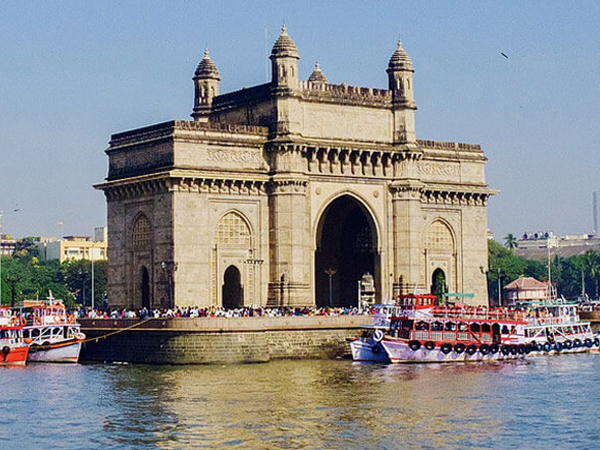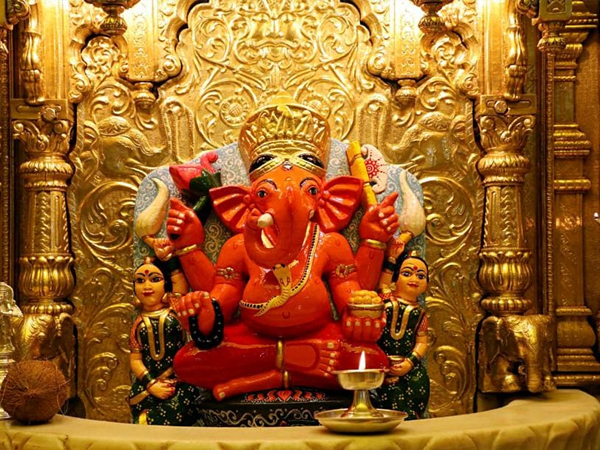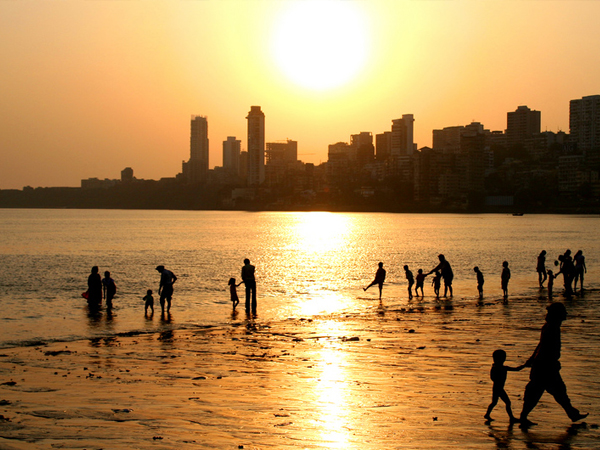 Badami, the beautiful capital of early Chalukyas from 540 to 757 AD., nestles in a spectacular gorge surrounded by gold-rust sandstone cliffs. It is indeed a treasure house of architecture and sculpture and has some of the earliest and finest examples of rock-cut caves and free-standing temple architecture. Caves: The famous four cave temples carved into a cliff on the southern side are full of splendid sculptures. The 6th century Cave-1, dedicated to Lord Shiva is the oldest and has a sculpture of 18 armed Natraja, the dancing Shiva. There are also figures of Ardhanarishvara, Harihara, Nandi, Parvati, and Garuda, etc. Cave No. 2 is dedicated to Lord Vishnu and is simpler in design. Some of the fine sculptures here are of Varaha, the boar incarnation of Lord Vishnu, Naga, and Trivikrama. The large and beautiful Cave No. 3 is dedicated to Lord Vishnu and enshrines an enormous four-armed figure of Lord Vishnu seated on his serpent couch. Cave 4 carved during the 7th – 8th centuries is the only Jain temple in Badami.
Badami, the beautiful capital of early Chalukyas from 540 to 757 AD., nestles in a spectacular gorge surrounded by gold-rust sandstone cliffs. It is indeed a treasure house of architecture and sculpture and has some of the earliest and finest examples of rock-cut caves and free-standing temple architecture. Caves: The famous four cave temples carved into a cliff on the southern side are full of splendid sculptures. The 6th century Cave-1, dedicated to Lord Shiva is the oldest and has a sculpture of 18 armed Natraja, the dancing Shiva. There are also figures of Ardhanarishvara, Harihara, Nandi, Parvati, and Garuda, etc. Cave No. 2 is dedicated to Lord Vishnu and is simpler in design. Some of the fine sculptures here are of Varaha, the boar incarnation of Lord Vishnu, Naga, and Trivikrama. The large and beautiful Cave No. 3 is dedicated to Lord Vishnu and enshrines an enormous four-armed figure of Lord Vishnu seated on his serpent couch. Cave 4 carved during the 7th – 8th centuries is the only Jain temple in Badami.
Jambulinga Temple: The ancient temple complex in the heart of the town dates back to 699 A.D. There are shrines of Lord Shiva, Vishnu, and Brahma, which open into a common mandapa.
Buddhist Temple: It is located in a natural cave near the ancient Bhutnath Lake.
North Fort: Within the fort are temples, relics of a granary, a treasury, and a watchtower providing an insight into the history of Badami.
Archaeological Museum: It houses specimens from Badami, Aivalli, and Pattadkal.
Around Badami
 Aivalli (Aihole) (43 kms.)
Aivalli (Aihole) (43 kms.)
Aivalli, the Cradle of Indian Temple Architecture’ on the banks of river Malprabha, was the capital of Chalukyas between the 4th and 7th centuries. The Chalukyas experimented here with the idea of building temples and one can see temple architecture from its nascent stage to more complex edifices. There are over 140 exquisitely carved temples, most of them are dedicated to Lord Vishnu.
Temple of Durga: This 7th-century shrine is the largest and finest monument of Aivalli. Its semi-circular apse surrounded by an open colonnade and remains of curvilinear shikhara is unique. The main figures at the shrine are – Chamunda Devi trampling the buffalo demon, Narasimha, and aspects of Lord Shiva. There is a small museum behind the Durga temple, exhibiting works of Chalukyan sculptors.
Banashankari Temple (5 kms.)
It is one of the most ancient temples of Karnataka. Harishchandra Teertha, a large sacred pond in front of the shrine is a fine example of Chalukyan temple architecture.
Mahkuta (5 kms.)
The Shaiva pilgrim center set amidst lush surroundings is famous for The Mahakuteshwara temple dedicated to Lord Shiva.
Pattadkal (20 kms.)
Pattadkal, the second capital of Badami Chalukyas, set on the banks of river Malaprabha is yet another grand showcase of Chalukyas style of architecture. The cluster of magnificent temples at the foothills has been listed by UNESCO as a ‘World Heritage Site. Most of the shrines date back to the 7th and 8th centuries, but the earliest temples were built here during the 3rd and 4th centuries. These temples represent the evolution of the South Indian style of temple architecture. There are 10 main temples and the largest among them is the Virupaksheshvara temple. It has a huge gateway with intricate inscriptions depicting scenes from Ramayana and Mahabharta. In front of the temple is a 2.6 meters high sculpture of Nandi.




